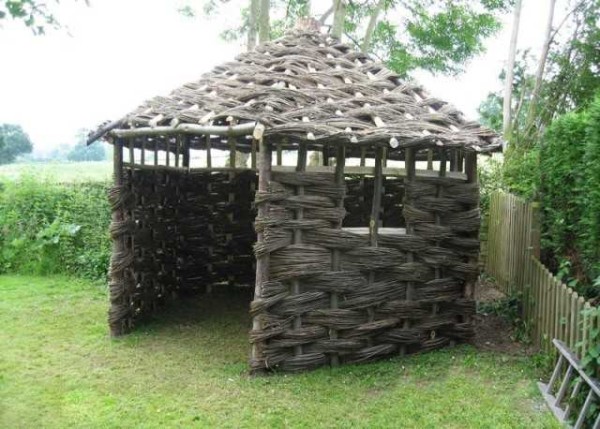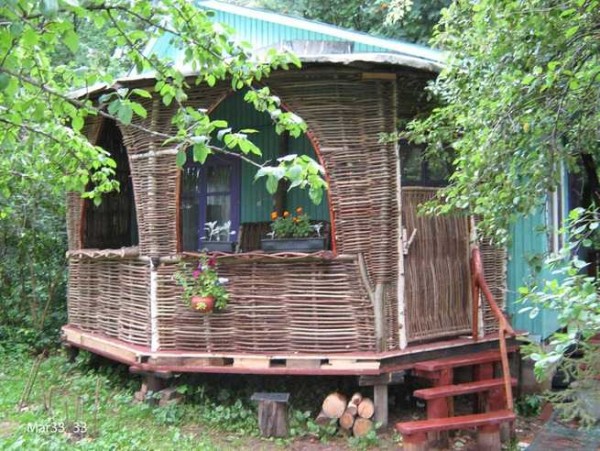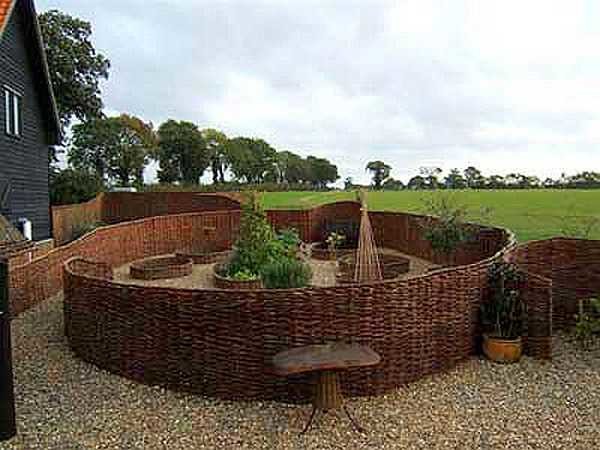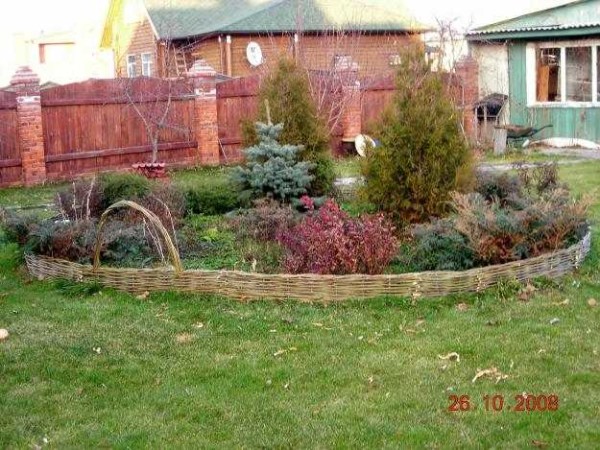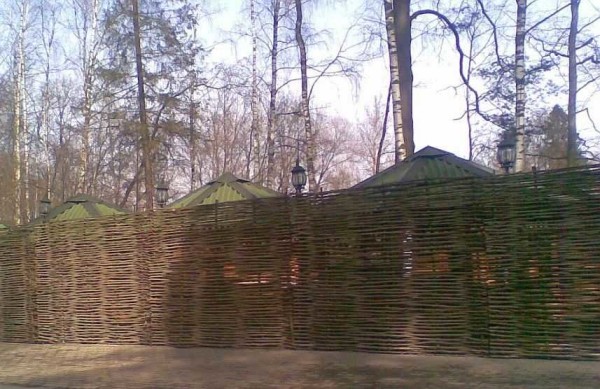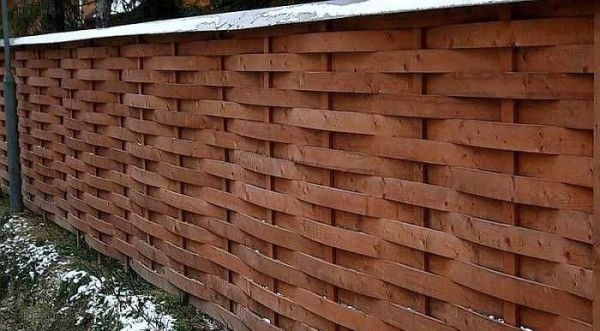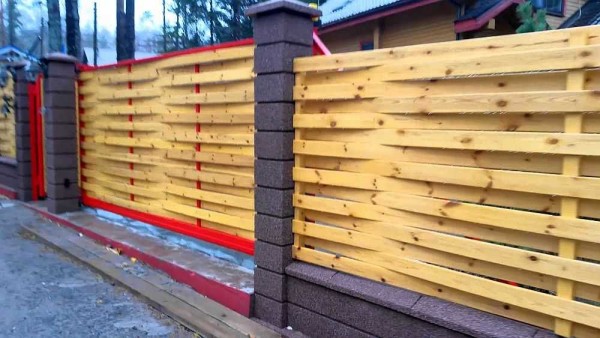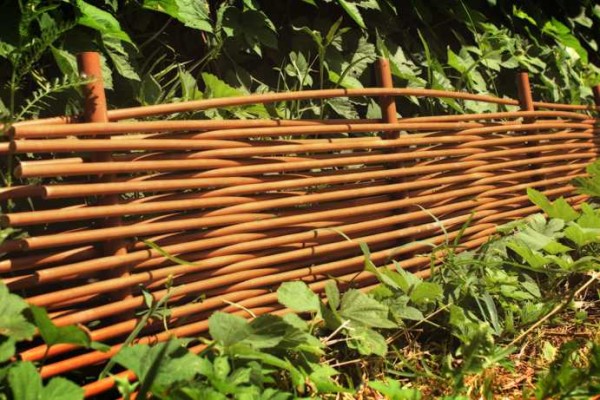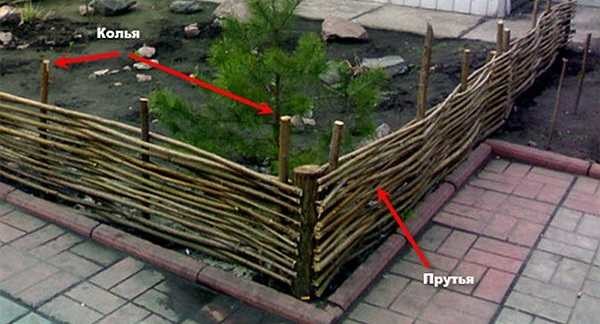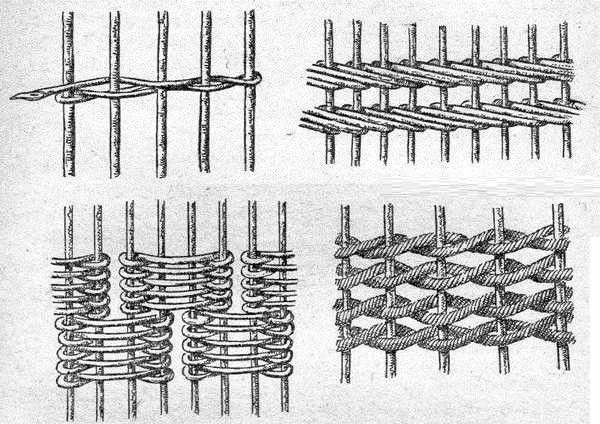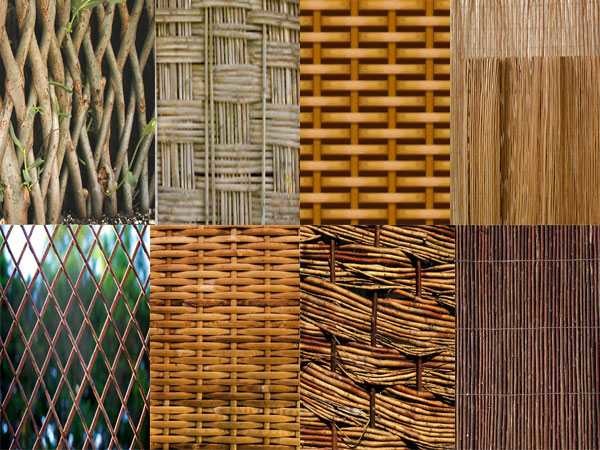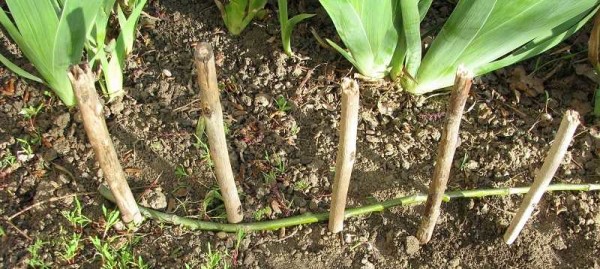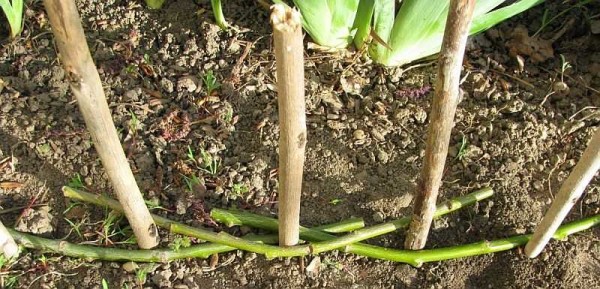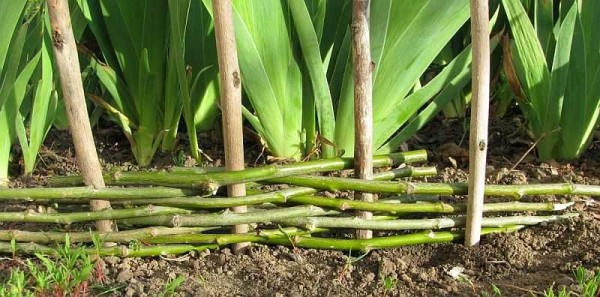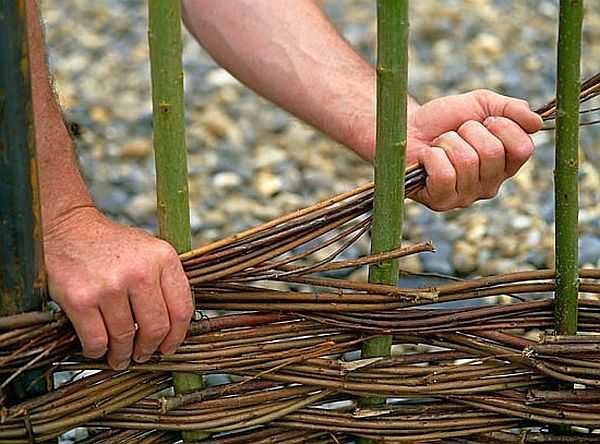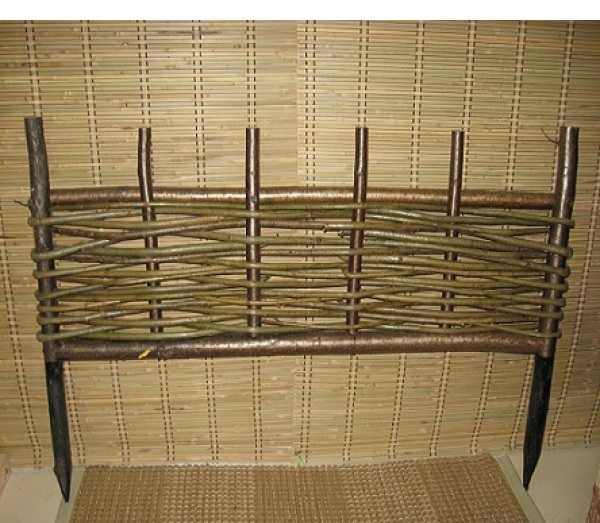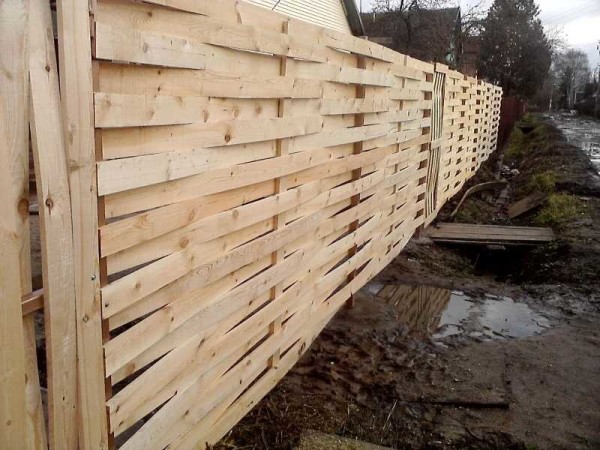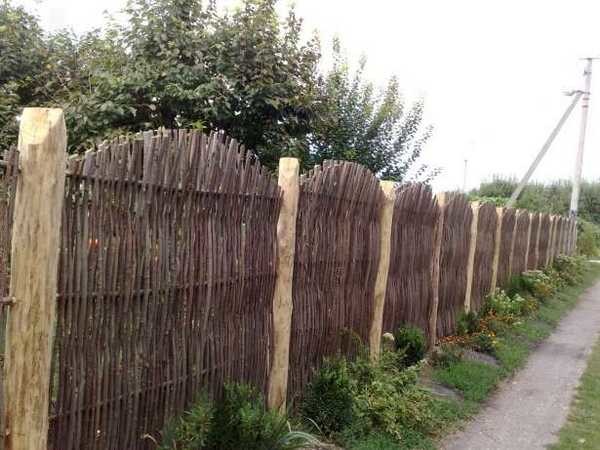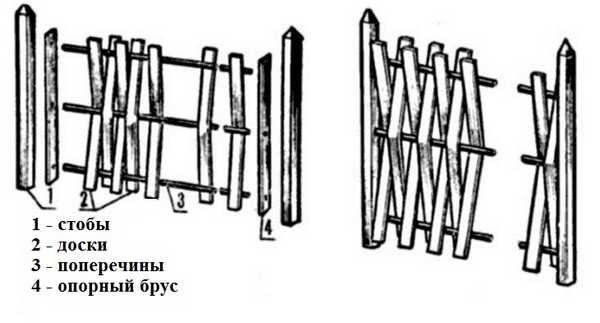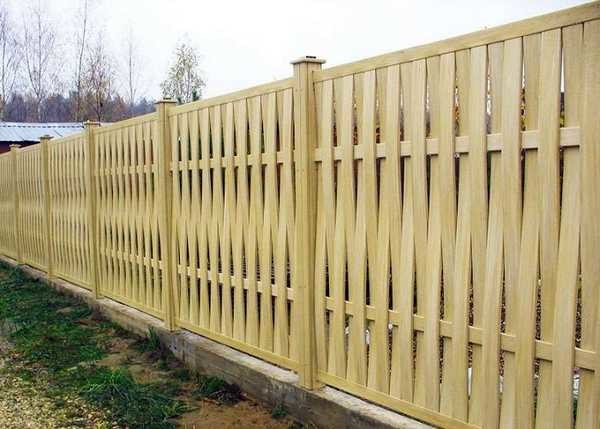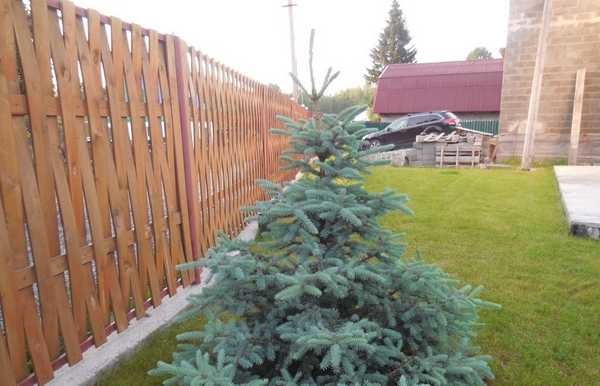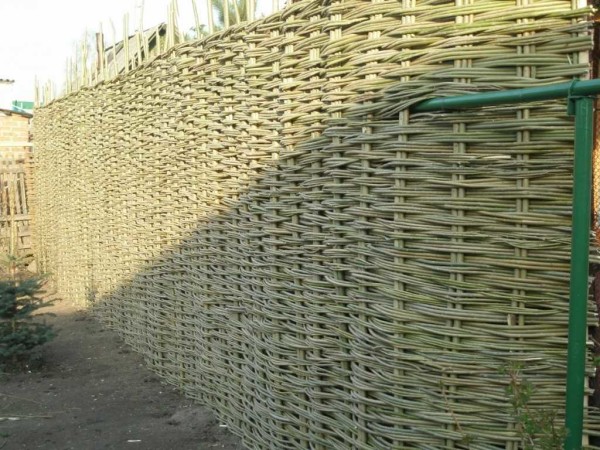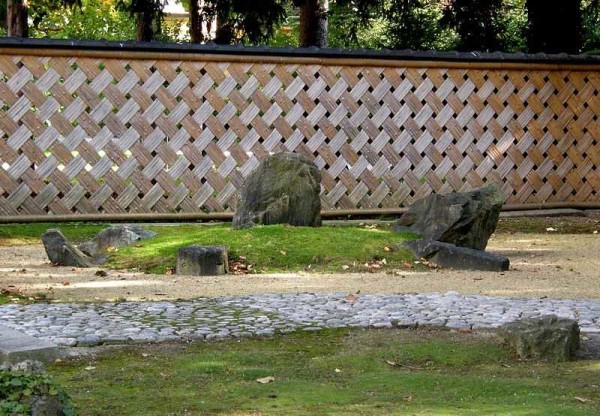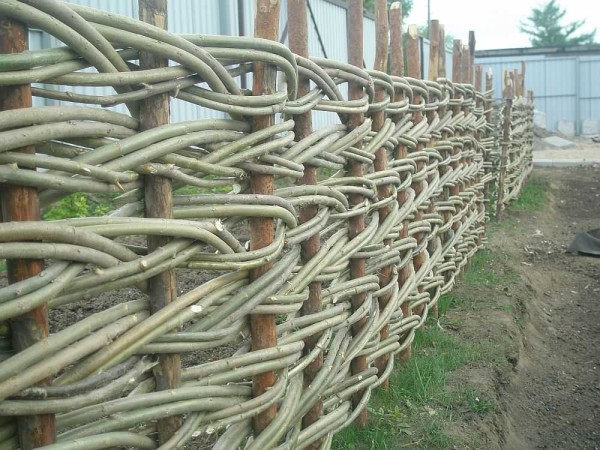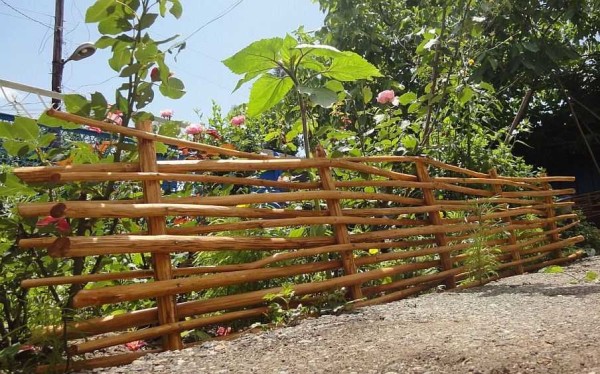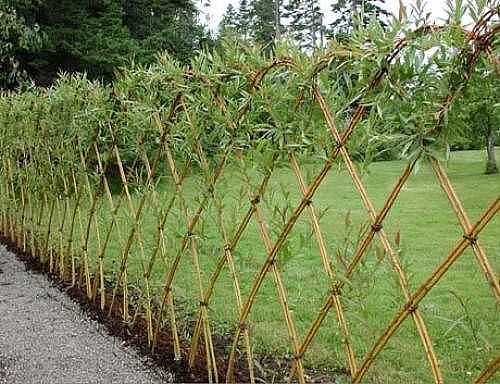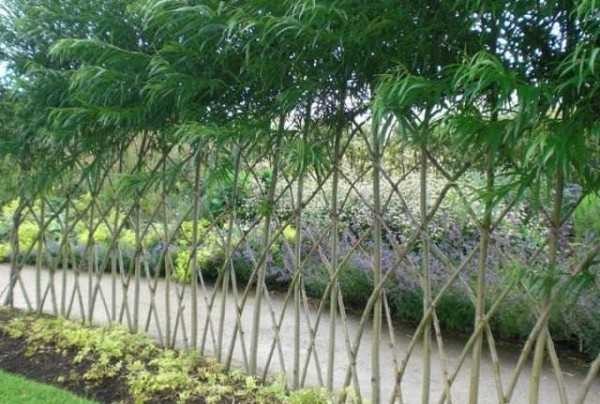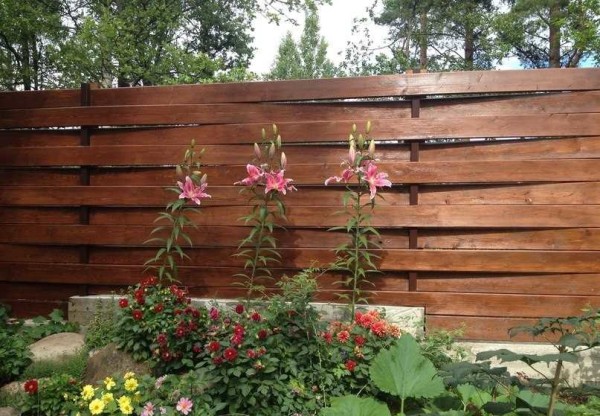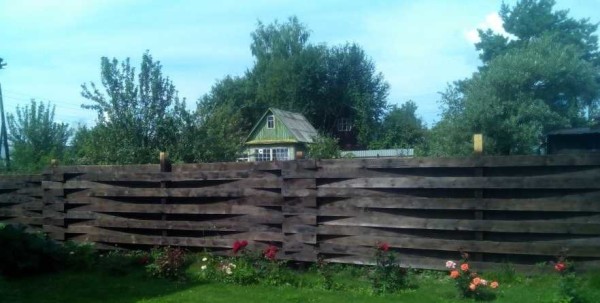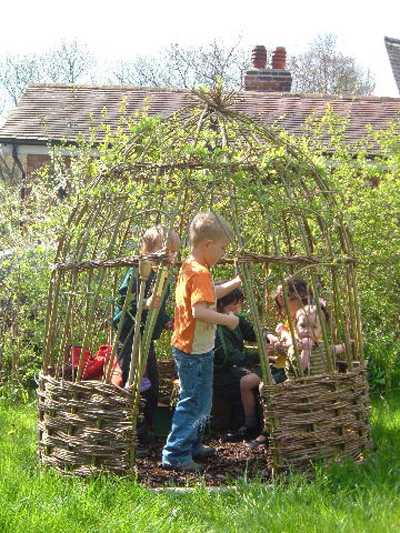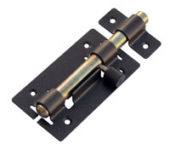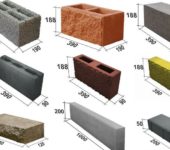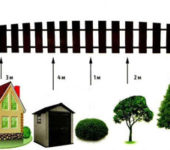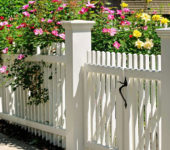Do-it-yourself wattle: from boards, twigs, branches
We make the first impression of the house and the cottage even before we entered the territory, sometimes - before we saw the house itself. The first thing that catches your eye is the fence. Everything else is after, and the first impression is from the fence. Some, albeit inexpensive, but attractive, I want to stop and take a look: original ideas always attract the eye. One of the most interesting is a wicker fence or wattle fence. Moreover, they are woven not only from vines or branches: there are braids from boards, but there are also from PVC rods. They all look different, but interesting and unusual.
The content of the article
What is a wicker fence made of
Let's make a reservation right away that there are two types of wicker fence - "wicker" - made of branches and "wicker" - made of boards. The manufacturing technique is very similar, therefore, both of them belong to wicker fences.
What is the braid made of
Now about what can be used to make such fences. A fence made of boards - Austrian wicker - is most often made of pine boards 20-25 mm thick, width - about 100 mm. The material is most often pine. It is more affordable, contains a large amount of resins, and therefore has a longer service life. But to prolong its "life" it will be useful to paint with compounds with anti-fungal properties.
Pillars for such a fence are made from a bar of at least 80 * 80 mm, but they are more durable from a profiled pipe. Size 60 * 80 mm or 40 * 80 mm, you can take square ones. Depends on how you will fix the board. The span between the supports is 2.5-3 meters, and an intermediate one is placed between them - from a bar of 40 * 40 mm or so. The exact span is determined locally and often depends on the flexibility of the board.
So that the metal pillars do not spoil the picture, they are covered with boards, which are fastened through with pins with inserted washers. You can make a plinth and pillars of bricks, and between them - a braid - vertical or horizontal - depending on your wishes.
What to use for wattle fence
Capes are made from young one-year-old shoots of several types of wood:
- willows (concrete);
- hazel (hazel);
- willows (red);
- aspen;
- birch;
- PVC rod.
The best are willow and hazel. Their core is dense, which is why the lines of operation are solid. The rest of the rocks quickly lose their appearance and strength.
The PVC rod for wattle fence appeared only a few years ago. And although it is not natural, it is in good demand: wood, even processed after a few years, loses its attractiveness. Plastic is not afraid of the sun or frost, and does not change its appearance for a long time. Its disadvantage is that it needs to be bought, while the vine can be chopped.
Preparation of rods
Then, having made a couple of fences, you can move on to more complex drawings. There are several schemes in the photo.
How to make a wicker fence yourself
We will consider the simplest option - a regular braid. For a start, you can practice on a small piece - you will master the technique, then you can start serious construction. For example, for training, you can make a fence for the garden or flower garden.
Horizontal braiding
We hammer six more or less thick pegs into the ground with a distance of 30-40 cm. We take the first vine, put it in a "snake" weaving between the posts. The vine alternately bends around the posts in front and behind.
We put the second rod in a mirror image to the lower one. If it starts from the back, then the next one is laid in front.
If there is a need to connect two vines, this is done on the nearest pole. The next one is simply laid as a continuation of the previous one. And the protruding ends are cut off after everything is assembled.
The third, and all odd rows, fit like the first, fourth and even - like the second. In general, we alternate the beginning in front of the pillar, then behind. Periodically, at the intersection of vines and near the pillars, they knock with a mallet - a wooden hammer, compacting the rows.
This is the horizontal fence. It can be continuous, or it can be shield. With continuous weaving, the pillars are installed along the entire perimeter, between them, one after the other, vines are woven. It turns out an almost solid wall - the ends are brought out in one direction and there they are cut obliquely so that it is not visible.
If there is no thick vine, you can put a whole bunch of thin twigs at a time. Hardly anyone will remove the bark from them, and a solid fence will not work either, but a small fence is easy. Such a fence made of twigs looks decorative, making it yourself is perhaps even easier.
When making panel boards, sections of a certain length are made. Set the required number of stakes - 4-6 pcs, vines are woven between them. After reaching the required height, the ends sticking out on the sides are cut off.
If necessary, the edges of the rods are nailed to the stakes with carnations. The resulting shields are as in the photo. Sizes can be different - more or less depends on the desire and type of fence.
When the required number of shields has been collected, they are installed in place, hammering the pointed ends into the ground. The nearby pillars can be tied together for greater stability. It turns out a wicker panel fence. See the video for an example of assembling wattle boards.
Installation of a shield fence can be done using metal posts. No special technologies:
- we drill holes below the freezing depth,
- we throw in a bucket of rubble, tamp it,
- we put a post, set it in height and adjust the vertical;
- concreting;
- we attach ready-made shields to the post.
One of the options for such an installation is in the video.
The same technology is used to make a wicker fence from boards. They only braid the boards, and the spans between the posts are made more.
Vertical braiding
The rods in a wicker fence can also be placed vertically. In this case, three to five crossbars are nailed to the posts. The first cross member is about 10 cm from the ground level, and then with the required pitch.
They weave like this: one end of the rod is pressed into the ground, for example, from the side closest to you. Then bend, alternately stretching between the bars. The next escape is placed on the other side. It turns out it is mirrored with the previous one. So they alternate - in front / behind.
Since the vine has a noticeable difference in size at the top and near the root, then in pairs they are turned upwards with a thick edge, then downwards. Then the same density is obtained at the top and bottom. If this is not done, it will turn out thickly at the bottom, rarely at the top. How to weave a vertical wicker, watch the video - a master class from a person who has made more than one wicker fence with his own hands.
A wicker fence is made of boards vertically. Only to make it look organic, and to extend the life of the boards, the tops are closed with a board stuffed on top. The ends are nailed to it. This also allows you to fix the boards, which is useful in this version - sometimes loose ones fall out.
You can also fix the boards to the lower crossbar. Only from above or from below: so that the wood does not move when the humidity changes.Another point: if you make it from a raw board, it is worth considering that after first collecting everything without gaps, after drying you will have 1 cm slots between the boards. This applies to both the horizontal and vertical model.
The upper and lower rungs can be made of shaped tube. It is a more reliable material, which also guarantees greater stability.
Photo ideas
It seems to many that a hedge made of woven twigs and branches is only a decorative fence that cannot fully protect the site. If you look at the next photo, you can doubt this. Wow, such a fence, and almost opaque.
The main thing in this business is a thorough approach. Put the pillars between which to braid everything very tightly. The service life may be small, but the costs are minimal. Moreover, both material and temporary.
If the usual weaving is already easy, you can try and do something extraordinary. For example, a wicker fence made of diagonally arranged branches. And you cannot call it a frivolous structure either.
There is another interesting way of weaving - a pigtail. By practicing in small areas, you can do something bigger.
If you need a decorative fence in the yard, in the garden, in the garden, a fence made of branches can be made rare. Even rather thick branches are used, but you need to work with them immediately, until they have time to dry, or then you will not bend them.
By the way, if you use freshly cut willow twigs and stick them into the ground, after a while you can get a hedge: the willow takes root perfectly. You might get something like the following.
When planting hedges, use the same weaving technique. They only mold it from rooted shoots. Once they are stiff, you get a very solid fence. Breaking through it is not easy.
Below are two pictures of wicker fences made of boards, showing the difference in using narrower and wider boards. In the first case, it is 100 mm, in the second - 150 mm.
Not only the fence can be made wicker. It turns out that there are a lot of interesting things: gazebos, huts, elements of garden decor. 